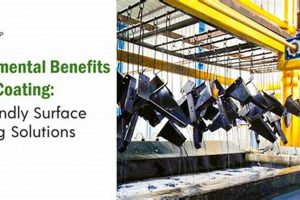The concluding process secures the raw edges of layered fabric within a textile project, primarily for quilts. This border treatment provides both an aesthetic frame and essential reinforcement against fraying. Applying this final border typically involves folding fabric strips over the quilt’s edges and stitching them in place, either by hand or machine. The result is a neat, durable perimeter.
This stage is vital for a quilt’s longevity and visual appeal. A well-executed edge not only prevents the internal layers from separating but also enhances the overall design. Historically, this step demonstrated a quilter’s skill and attention to detail, transforming a functional item into a treasured heirloom. It provides a surface to grab to move the quilt and protects the edge from damage from movement.
The subsequent discussion will explore various methods and techniques employed to achieve a professionally completed and lasting edge finish. Attention will be given to considerations such as fabric selection, seam allowance, mitered corners, and stitch types for an effective enclosure.
Completion Tips for Securing Edges
The following guidelines present best practices for creating a durable and aesthetically pleasing border on layered fabric projects. These tips emphasize precision, appropriate material selection, and consistent execution.
Tip 1: Meticulous Measurement: Accurate measurement of the quilt’s perimeter is crucial. Inconsistent dimensions will result in puckered or stretched borders. Measure each side in several locations and average the results to determine the necessary strip length.
Tip 2: Fabric Pre-Treatment: Pre-washing the border fabric is essential to prevent shrinkage after the project is completed. This step ensures the border will remain flat and even over time.
Tip 3: Precise Corner Mitering: Achieving sharp, clean corners requires accurate mitering techniques. Utilizing a specialized ruler or carefully folding and pressing the fabric is recommended for professional results.
Tip 4: Consistent Seam Allowance: Maintaining a uniform seam allowance, typically 1/4 inch, is vital for consistent border width and overall structural integrity. Using a walking foot on the sewing machine helps ensure even fabric feeding.
Tip 5: Strategic Stitch Selection: Choose a stitch that is both secure and aesthetically appropriate. A straight stitch is generally suitable for machine application, while a blind stitch may be preferred for hand-sewing to create an invisible seam.
Tip 6: Careful Corner Reinforcement: Reinforce the corners with additional stitching to prevent tearing or separation. A backstitch or a small, hand-sewn stitch can provide extra security.
Tip 7: Controlled Tension: Maintaining even tension on both the top and bobbin threads of the sewing machine will prevent puckering or skipped stitches. Test the tension on a scrap piece of fabric before beginning the final process.
Adhering to these guidelines will significantly enhance the finished product’s durability, appearance, and value. Attention to detail at this stage is paramount.
The subsequent sections will delve into advanced techniques and troubleshooting common challenges encountered during border application.
1. Durability
The enduring quality of a finished textile project is directly contingent on the integrity of its edge. The culminating border is not merely a decorative element; it serves as a structural safeguard against the unraveling and degradation of the layered fabrics within. A border improperly secured, constructed with inferior materials, or exhibiting insufficient seam allowance will inevitably compromise the project’s longevity. Real-world examples include vintage textile projects with frayed or detached borders, evidencing the critical role of a robust enclosure. Conversely, heirlooms with meticulously applied and maintained borders demonstrate the value of investing in durable construction techniques from the outset. The connection between this finishing element and robustness is therefore one of direct causation: the former actively promotes or undermines the latter.
Employing high-quality fabrics, reinforcing corners, and utilizing a secure stitch contribute directly to the robustness of the finished edge. Furthermore, the type of stitch employed, whether a machine-applied straight stitch reinforced with backstitching or a hand-sewn blind stitch, affects the overall strength and resistance to wear. In practical applications, textile projects subjected to frequent use or laundering, such as children’s quilts or blankets, require a border constructed with particular attention to durability. The selection of tightly woven fabrics and the application of a reinforced border are essential considerations in such scenarios.
In summary, the robustness of a finished edge is inextricably linked to the longevity of the textile project. Understanding the principles of durable construction, selecting appropriate materials, and employing secure stitching techniques are essential for creating projects that withstand the test of time. Challenges such as fabric fraying and seam stress can be mitigated through careful planning and execution, ensuring the project’s enduring value and functionality. This understanding is integral to the broader theme of textile project preservation and sustainability.
2. Aesthetics
The visual presentation of a textile project is significantly influenced by the concluding border application. This component acts as a frame, defining the boundaries of the design and dictating the viewer’s initial impression. A poorly executed border can detract from even the most intricate and thoughtfully designed center, while a well-crafted one elevates the overall aesthetic, creating a sense of completion and refinement. The selection of fabric, color, and width are critical considerations in achieving a harmonious aesthetic balance. For instance, a quilt featuring vibrant, geometric patterns may benefit from a solid-colored border in a complementary hue, allowing the central design to remain the focal point. Conversely, a quilt with a more subdued or monochromatic palette could be enhanced with a border incorporating a subtle pattern or texture, adding visual interest and depth.
Furthermore, the method of application and the finishing details contribute significantly to the final aesthetic outcome. Mitered corners, for example, offer a clean, precise look that enhances the project’s formality. Hand-sewn borders often possess a unique charm and handcrafted appeal, while machine-stitched borders provide a more uniform and streamlined appearance. The choice between these techniques depends on the desired aesthetic and the skill level of the individual completing the project. Practical applications of this understanding are evident in professional quilt exhibitions and competitions, where meticulous border application is often a key criterion for judging. Examples abound in online quilting communities and pattern instructions, highlighting the critical relationship between border design and overall aesthetic success. Consideration must also be given to the density of the quilting within the body of the work. A heavily quilted center may require a wider border to visually balance the textures. Conversely, a sparsely quilted quilt may appear visually heavy with a border that is too wide.
In summary, the aesthetic impact of the culminating edge finish is undeniable. Careful consideration of fabric selection, application technique, and finishing details is essential for achieving a visually pleasing and harmonious outcome. The border serves as a crucial frame, defining the project’s boundaries and influencing the viewer’s overall impression. A well-executed border enhances the aesthetic appeal of the textile project, adding value and contributing to its lasting legacy. The understanding of this connection contributes to appreciation for and expertise in textile arts. Challenges in aligning aesthetic goals with practical constraints, such as budget or skill level, can be overcome through thoughtful planning and resourcefulness, ultimately achieving a finish that is both visually appealing and structurally sound.
3. Protection
The concluding border treatment furnishes a vital layer of defense against physical damage and wear. Raw edges of layered fabrics, if left exposed, are inherently susceptible to fraying, tearing, and separation. This susceptibility directly compromises the structural integrity and aesthetic value of the completed textile project. The border, therefore, acts as a protective barrier, encasing and reinforcing the perimeter to mitigate these risks. A real-world example is the preservation of antique textile projects. Those with intact, well-maintained borders often exhibit significantly less internal damage than those with compromised or missing borders, demonstrating the direct protective impact of this final element.
Beyond safeguarding against edge damage, the concluding treatment offers protection against environmental factors. Dust, dirt, and even ultraviolet radiation can degrade fabrics over time. A tightly woven, securely attached border minimizes the penetration of these elements, thereby extending the lifespan of the project. Practical applications of this principle are evident in the selection of border fabrics. Darker colors or tightly woven materials offer greater protection against UV damage, while stain-resistant finishes can further enhance resistance to environmental soiling. The choice of thread also plays a role, as UV-resistant threads will prevent degradation from sunlight exposure. Quilts made for outdoor use, such as picnic blankets, are often reinforced with a more durable, protective border than those intended for indoor display only.
In summary, the protective function of the concluding border treatment is paramount. It shields the layered fabrics from physical damage, environmental degradation, and wear. By understanding and prioritizing this protective aspect, individuals can ensure the longevity, durability, and continued aesthetic appeal of their textile projects. Challenges in selecting appropriate materials and construction techniques can be overcome through careful research and planning. The significance of the protective role is closely tied to the larger themes of textile conservation and sustainable practices.
4. Longevity
The prolonged lifespan of a textile project, particularly a quilt, is intrinsically linked to the quality of the concluding border application. This element serves as the primary defense against the unraveling and degradation that naturally occur over time with use and environmental exposure. A well-executed edge finish directly contributes to the quilt’s ability to withstand the stresses of repeated handling, washing, and storage, thereby extending its useful life. The absence of a properly secured perimeter renders the inner layers vulnerable, accelerating wear and ultimately diminishing the project’s existence. Historical quilts often serve as tangible examples; those exhibiting intact and robust border treatments frequently demonstrate greater overall preservation compared to those with compromised or damaged edges.
The material composition and construction techniques employed in the edge finishing process significantly influence the ultimate lifespan. The utilization of durable, high-quality fabrics, reinforced stitching, and meticulous corner mitering contribute to a more resilient border that is less susceptible to fraying and tearing. For instance, a border constructed from a tightly woven fabric, secured with a reinforced stitch, and carefully mitered at the corners offers a greater degree of protection against the typical stresses encountered over time. Moreover, the method of attachmentwhether hand-sewn or machine-stitchedcan impact longevity, with hand-sewing often providing enhanced flexibility and reduced stress on the fabric fibers. Practical applications of this understanding are evident in the creation of heirloom-quality textile projects, where attention to detail in the border construction is paramount.
In conclusion, the correlation between the concluding edge application and the sustained existence of a quilt is undeniable. Investment in quality materials, skilled craftsmanship, and meticulous attention to detail during the border finishing process directly translates to increased durability and a prolonged lifespan. Challenges related to material selection or construction techniques can be mitigated through careful research and planning. The emphasis on edge finish extends to a broader understanding of sustainable practices and the responsible stewardship of textile heritage.
5. Security
The aspect of security in the concluding process of encasing quilt edges directly pertains to the reliable containment of the quilt’s multiple layers. A properly executed edge application ensures these layers remain united and prevents slippage, bunching, or separation, maintaining the quilt’s structural integrity and intended design. Compromised or incomplete border security introduces vulnerabilities, increasing the risk of internal degradation and premature wear. For instance, quilts used frequently or subjected to washing cycles necessitate a secure border to prevent the batting from shifting or the fabric layers from separating, which can result in unevenness, distortion, and ultimately, damage to the quilt. The bond prevents interior damage from travel, use or washing of the product. Without security the inner materials can become damage.
Achieving a secure perimeter necessitates careful selection of appropriate fabric and stitching techniques. Durable materials, such as tightly woven cotton or linen, are preferred for their resistance to fraying and tearing. Reinforcement of the corner is also important and ensures protection. Employing a stitch with sufficient strength and density is equally critical. A securely applied border serves not only to contain the quilt’s internal components but also to protect the raw edges of the fabric from external damage, such as abrasion or snagging. Quilts intended for display, despite not undergoing the same physical stresses as those in regular use, still require a secure edge to prevent gradual unraveling or shifting of the layers, which can compromise their aesthetic appearance over time. Practical implementations of these considerations range from machine-stitched borders reinforced with backstitching to hand-sewn borders using a whipstitch or blanket stitch for enhanced durability.
In conclusion, the element of security is paramount in the process of securing quilt edges. It ensures the sustained structural integrity, aesthetic appeal, and functionality of the quilt. Challenges in achieving a secure border, such as selecting appropriate materials or mastering complex stitching techniques, can be addressed through careful planning and execution. Understanding the connection between perimeter security and overall quilt preservation extends to a broader appreciation for the craftsmanship and attention to detail that contribute to the longevity and value of textile projects.
6. Neatness
In the realm of textile arts, particularly quilt-making, neatness in the culminating border application signifies a commitment to precision and refinement. It extends beyond mere aesthetics, reflecting the quilter’s attention to detail and dedication to producing a high-quality, enduring piece.
- Precise Corners and Edges
Neatness manifests significantly in the creation of sharp, well-defined corners and even edges. Mitered corners, for instance, should exhibit clean, unbroken lines, demonstrating careful measurement and accurate stitching. Rounded corners, if employed, should be consistently shaped and smoothly finished. Deviation from these standards detracts from the overall appearance, suggesting a lack of attention to detail. An example is a quilt displayed in a judged competition. Deviations in corners show that the artisan did not pay attention to details.
- Consistent Stitching
Uniform stitch length and consistent tension are hallmarks of neatness. Irregular stitching patterns disrupt the smooth appearance of the border, drawing attention to imperfections rather than complementing the central design. Whether machine-stitched or hand-sewn, the stitches should lie flat and evenly spaced, creating a visually appealing and structurally sound finish. The consistent border makes for a more durable and long lasting quilt.
- Smooth, Flat Finish
A neat edge treatment results in a smooth, flat finish, free from puckers, wrinkles, or distortions. These imperfections can arise from uneven tension, improperly prepared fabric, or inaccurate measurements. Achieving a flat finish requires careful pressing and blocking techniques, ensuring the border lies seamlessly against the quilt top. A smooth finish enhances the quilt’s drape and comfort, particularly important for functional pieces like bed quilts.
- Concealed Raw Edges and Seams
A hallmark of quality workmanship is the complete concealment of raw edges and seams within the border. Exposed edges detract from the quilt’s visual appeal and increase the risk of fraying or unraveling over time. Techniques such as folding the border fabric twice before stitching or using specialized tools to tuck edges under ensure a clean, professional finish and enhance the quilt’s longevity.
These facets of neatness, when meticulously executed, elevate the concluding border application from a mere functional element to a defining characteristic of a well-crafted quilt. The pursuit of neatness reflects a commitment to quality, precision, and enduring craftsmanship, resulting in a textile project that is both visually appealing and structurally sound.
Frequently Asked Questions
The following section addresses common inquiries regarding the concluding process for textile projects. These questions aim to clarify key concepts and dispel misconceptions associated with this critical finishing step.
Question 1: Why is this final step necessary for a quilt?
This concluding process secures the raw edges, prevents fraying, and adds structural integrity. It also provides a decorative frame that enhances the quilt’s overall aesthetic.
Question 2: What is the most common cause of a poorly finished edge?
Inaccurate measurements are a frequent culprit. Discrepancies in dimensions lead to puckered or stretched borders, compromising the finished product’s appearance and durability.
Question 3: Is machine application preferable to hand application, or vice versa?
The optimal method depends on individual preferences and the desired aesthetic. Machine application offers speed and uniformity, while hand application allows for greater control and a handcrafted appeal. Both methods can yield excellent results when executed properly.
Question 4: How does the choice of fabric influence the outcome of this process?
The fabric’s weight, weave, and fiber content impact its durability, drape, and resistance to fraying. Tightly woven, high-quality fabrics are generally recommended for optimal results.
Question 5: What is the significance of mitered corners?
Mitered corners create a clean, professional finish, minimizing bulk and preventing fraying at the corners. Accurate mitering requires precise cutting and stitching techniques.
Question 6: Can a damaged edge be repaired effectively?
Minor damage can often be repaired with careful hand stitching or machine stitching. However, extensive damage may necessitate replacing the entire border to restore the quilt’s structural integrity and aesthetic appeal.
In summary, successful completion of this final step involves careful planning, precise execution, and attention to detail. Addressing potential challenges proactively can ensure a lasting and visually pleasing result.
The subsequent section will provide a checklist of essential steps for a successful final step.
Finish Binding on Quilt
The preceding exploration has underscored the critical role of correctly securing quilt edges. It is a process demanding attention to structural integrity, aesthetic consideration, protective function, expected longevity, secure assembly, and neat execution. The strength of the joining directly relates to the long-term preservation of the entire quilt.
Continued focus on perfecting techniques for the final step is vital. Only through rigorous practice and adherence to the highest standards can textile artisans assure that their creations will endure as testaments to their skill and dedication for generations to come.







